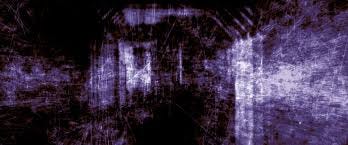Two 3D features by Ken Jacobs: The Guests (2014) and Ulysses in the Subway (2017)
The Guests (2014)
All film is a lie told by technology, in collaboration with the tendency of our brains to organize sense data into a coherent form. A film shows us still images rapidly, we see motion. Images and sound are recorded and replayed separately, but synchronized such that we “hear” the sounds emerge from the images. These tricks normally remain hidden from view, and commercial filmmakers typically work to ensure they do. But 3D has an inherent tendency to bring it back into view, because it requires our willful collaboration in the process of self-trickery. We put on special glasses to make the images “correct” while we can readily see that this is not their “actual” form.
Ken Jacobs has spent decades breaking down all of these illusions, and at times rebuilding new ones. As early as 1969, in probably his best known film (Tom, Tom, the Piper’s Son), Jacobs used rephotography to slow down a brief 1905 film reel into a two hour film that is visibly a series of still frames. A variety of surprises emerge along the way and the “real time” action of the original film is replaced by the now apparent action of cinematic technology and the secrets hidden among and between frames.
The Guests is one of a number of recent works that picks up this thread with the additional element of 3D technology. Here, again, we have a short reel drawn out to feature film length with each frame lasting several seconds, but the frames are now given a sense of depth because different frames are shown to the left and right eyes. This is the fundamental technology of nearly all 3D film, but Jacobs accomplishes it here using temporally displaced frames filmed from one position rather than spatially displaced frames filmed simultaneously from two positions, as is the standard 3D filmmaking approach. (Notably, Charlie Shackleton uses the same stereoscopic trick in his new film Lateral, which I wrote about in my previous post here, though Shackleton keeps things moving in real time and is interested in perpetuating rather than illuminating the illusion. Also notably, Shackleton fails to mention this Ken Jacobs film made a decade earlier…)
The effects are quite strange. The images have a 3D depth, but it’s a compromised depth which renders various figures and body parts translucent or blurry relative to others. The location of these oddities, and the location of the greatest illusion of depth, shifts with each change of frame. The very mechanisms by which we supposedly “see” movement, depth, space and so on are laid bare.
Of course, while that may be an endlessly interesting line of inquiry, it’s not an endlessly interesting thing to watch, and like some other Jacobs film this one starts to drag and test even the nerdiest viewer’s patience. The varied and dynamic use of sound (rather the inverse of the other film discussed below) helps, and cheekily underlines the illusory and imposed nature of narrative and emotion, but it’s still pretty dry. Perhaps the sort of work more worth thinking and writing about than rewatching.
Ulysses in the Subway (2017)
Some have dismissed this film as a glorified music visualizer, and I understand the temptation, especially since the blurb basically encourages that reading, but I think it’s wrong.
In the first place, the structuring foundation is an hour long field recording, which is interesting in and of itself. Through sound we get a wideranging snapshot of human activity, from technologies of transportation to music to conversation. All of this is a lot more complex than it seems if you just think of it as the source for the images. Think for example of the performance of Beethoven on what sounds like steel drums, and how the change of musical interpretation and context through time mirrors the historical change of the city and its subway.
There’s a big clue here in the incorporation of old found footage which sometimes replaces, sometimes intertwines with the more abstract images. The modern day sound recording with the perhaps century old reels suggests the distance and indirectness of the sound-image relationship, and the way the visual element is handled more generally follows that. At times we see something as obvious as a spike in visual activity reflecting a loud noise, but at other times the images pause while the sound continues, or multiple visual tracks play at once and interact with each other.
On the whole I think it’s best to view this more as you would Jacobs’s more abstract eternalism pieces like Seeking the Monkey King or Cyclops Observes the Celestial Bodies than as a foray into visual music. It’s visually innovative and fascinating material in and of itself which perhaps functions as a something of a Rorschach test (with the semi-narrative “quest” of an audible subway journey, along with the mythological title, encouraging an epic reading of the images). Here the 3D is perhaps a bit less mysterious and hypnotic in its transparently digital animation, but its loose relationship with sound makes up for what’s lost there and provides another element with a stronger structural throughline. It’s an ever-evolving abstraction which challenges ideas of representation both through the forms it implies visually and through the sound-image(-image) relationship.






